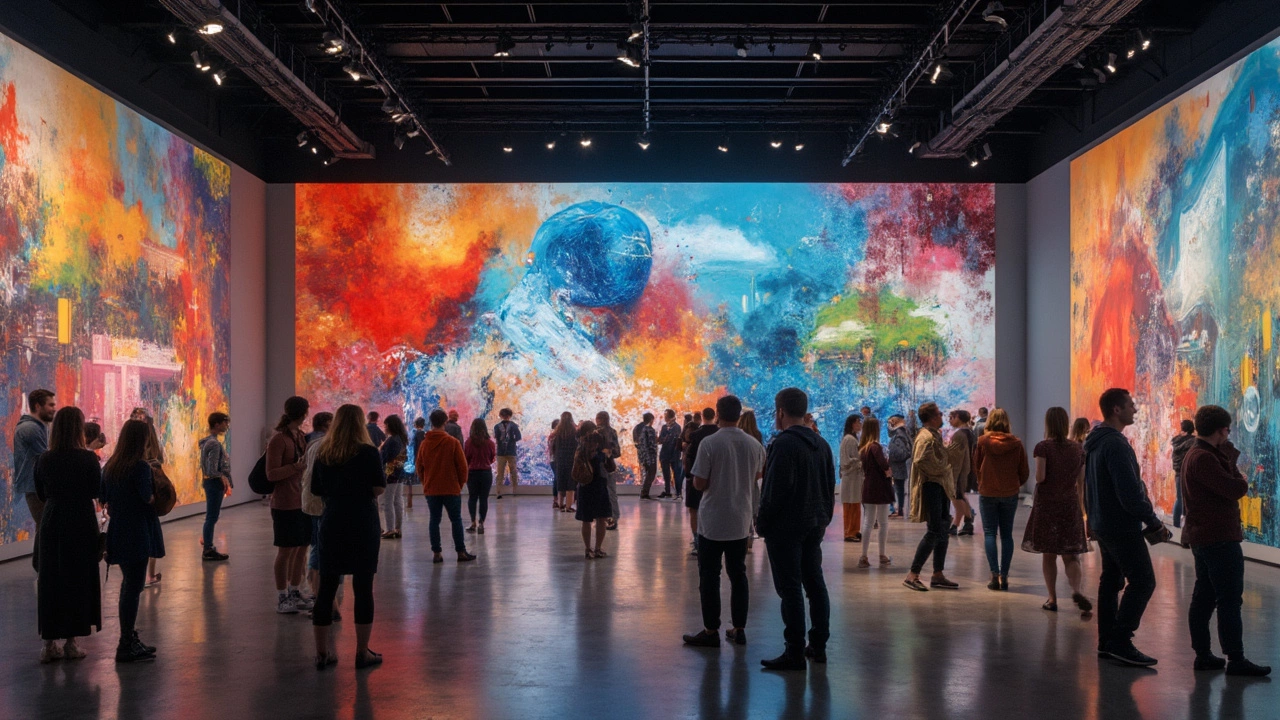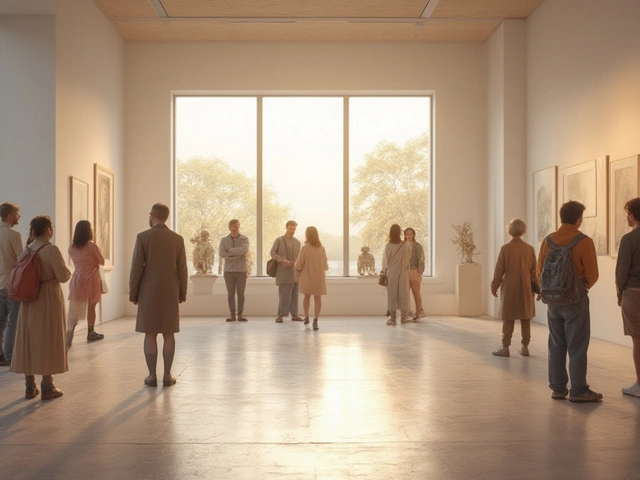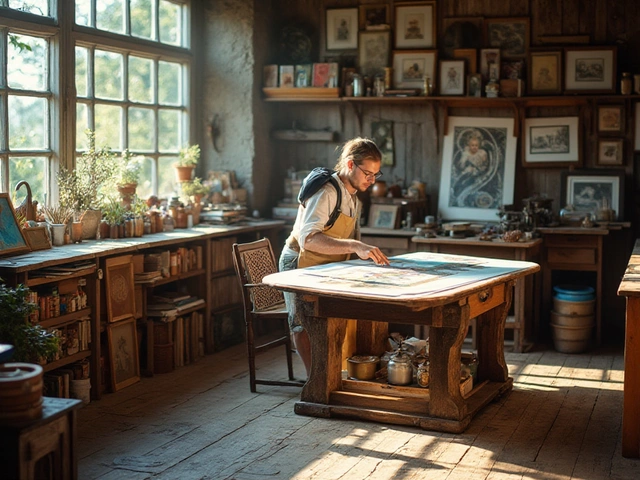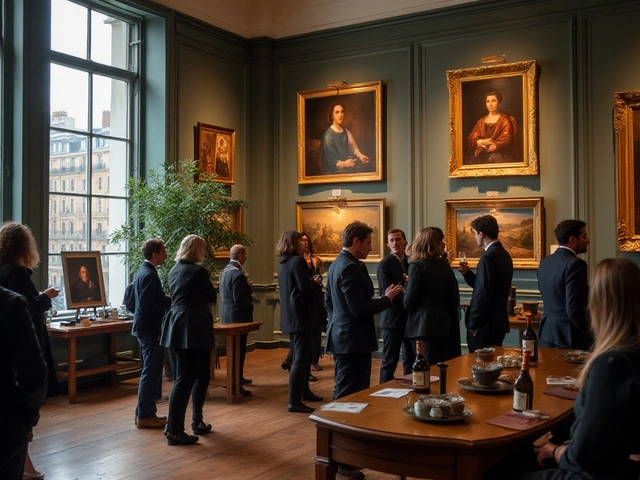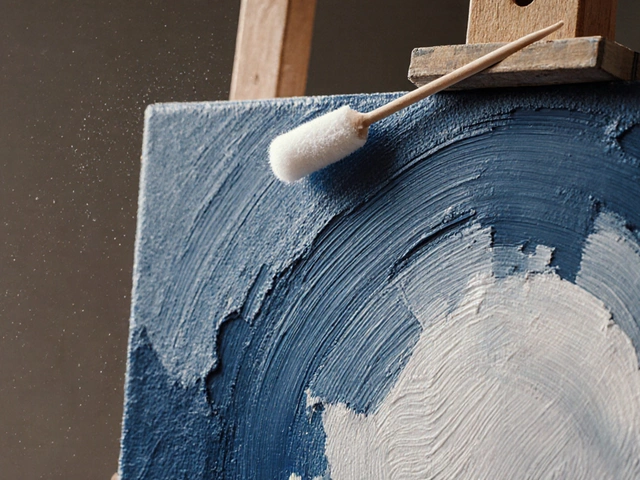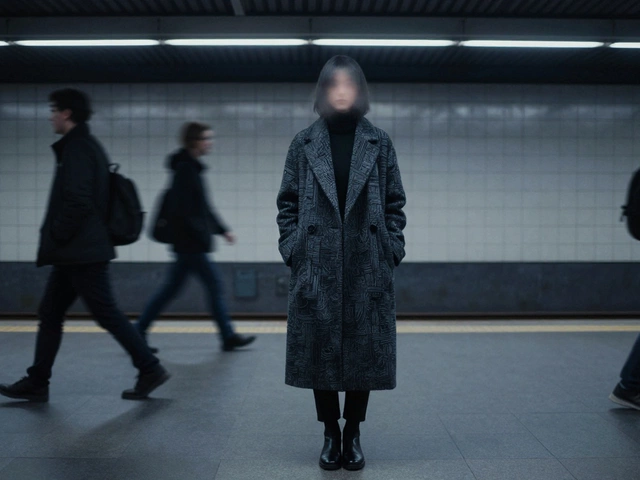Modern art, much like your favorite music genre's evolving hits, is always changing and pushing boundaries. It's about shaking up traditions and trying new things. If you've ever stood in front of a painting, puzzled or intrigued, wondering what it's all about, you're not alone. Modern art flips the script on classical styles by ditching the usual rules. Think of a rock band swapping their regular guitar for a synthesizer—unexpected but cool, right?
One key feature is innovation. Modern artists are like the daredevils of the art world, constantly experimenting. They blend unusual materials, try out bizarre techniques, and introduce fresh perspectives. It's not just about what you see; it's about what you feel and think. Ever felt like a piece of artwork was talking to you? That's the artist's experiment working its charm.
Then there's abstraction, a hallmark of modern art. If you've come across a painting and thought, 'What on earth is that?', welcome to the world of abstraction. It's less about replicating what you see in real life and more about conveying emotions and ideas. Like when you hear a mysterious song and the lyrics aren't clear, but the vibe hits you deep.
- Breaking Traditional Boundaries
- Innovation and Experimentation
- Focus on Abstraction
- Emphasis on Expression
- Incorporation of New Technologies
- The Role of the Viewer
Breaking Traditional Boundaries
Back in the day, art stuck pretty close to religious scenes, portraits of rich folks, and landscapes that looked like postcard photos. Modern art wasn’t having any of that. Think of it like when your favorite burger chain decides to serve sushi—it stood out, grabbed attention, and challenged the norm. Modern artists ripped up the rulebook and started creating art that didn’t necessarily look 'pretty' or 'realistic.'
One of the major shifts happened with the rise of Impressionism in the late 19th century. Artists like Claude Monet were more interested in capturing light and movement than getting every detail just right. It was a game-changer, kind of like when music went from symphonies to jazz. This paved the way for the bold strokes of Post-Impressionists like Van Gogh, whose swirls and colors spoke a different language.
Moving into the early 20th century, movements like Cubism further shook things up. Pablo Picasso and Georges Braque took a hammer to reality, rearranging it into geometric forms. Imagine taking a portrait and breaking it into pieces, then reassembling it with a dose of creative flair. That's Cubism.
Modern art’s streak of rebellion didn’t stop there. Dada artists looked around at the chaos of World War I and said, 'Art doesn't have to make sense,' breaking all conventions. They used found objects, collages, and sometimes plain old nonsense to make powerful statements. It was like saying, 'Hey, art can be anything.'
All these changes dramatically altered the art world. Artists weren't just creating beautiful things; they were challenging viewers to think differently. They were storytelling in new, unexpected ways. And this freedom—breaking away from the traditional—is what makes modern art so exciting to explore. It's not always about what you see; it's about opening up your mind to different perspectives, just like when you discover a new favorite genre of movie you never thought you'd like.
Innovation and Experimentation
Innovation is like the secret sauce in modern art. Artists jumped out of the conventional box and started using all sorts of materials and methods that people might never expect. Ever seen a sculpture made entirely of recycled trash? Yup, that's modern art taking a wild ride.
One famous example of artistic experimentation is Jackson Pollock. This guy didn't just paint; he dripped, splattered, and poured paint all over his canvases. It was messy and chaotic, yet somehow exciting and original. Pollock wasn’t striving for neatness; he was creating a mood, a raw energy that traditional art just didn't deliver.
The 20th century saw artists embracing not just new styles but also new technology. Think of Andy Warhol with his silk-screen prints. Suddenly, the art world was blending with the world of commercial advertising. Warhol's work questioned what art could be, using everyday images like soup cans and famous celebrities. It was bold and definitely something no one had seen before.
Modern artists also had a playful approach to structure and form. Kazimir Malevich, for instance, took minimalism to a new level with his "Black Square," a simple black square on a white background. Sounds simple, right? But it turned art into something philosophical, making people ponder what constitutes art.
This era isn’t just limited to painting and sculpture but stretches out to video art, installations, and performance art. With tech evolution, artists are utilizing digital tools and platforms to create interactive art that's both immersive and engaging. Today, digital artists might use virtual reality to build spaces you can almost step into.
Focus on Abstraction
Alright, let's unravel the mystery of abstraction in modern art. Imagine looking at a painting that doesn't show clear objects or faces, just shapes, colors, and lines. It's not just arty gibberish—there's a method to this madness.
Abstraction is all about stepping away from reality. Artists strip down their subjects to fundamental elements, creating a new way to look at the world. It's like listening to instrumental music where you get the vibe and emotion without any lyrics telling you what to feel.
One of the big guys in this scene was Wassily Kandinsky. He believed that art could be like music, evoking emotions without needing to depict anything specific. Sounds pretty radical, right? His works are like visual symphonies.
Abstraction isn't just a free-for-all. It plays by its own set of rules, focusing on color, form, and line to portray emotions and ideas. Think about it: a simple dash of red beside a cool blue can create tension or harmony all depending on context. Artists like Jackson Pollock took this further. His drip paintings are action on canvas—a dance of paint that captures movement and energy.
The cool thing about abstract art is there's no right or wrong way to view it. It's about what you see and feel. So, if you've ever stood in front of an abstract piece and thought, 'I don't get it,' that's okay. It's all about your personal connection to it.
Next time you're at a gallery, try spending more time with an abstract piece. Let your mind wander. Does it remind you of anything, maybe a feeling or a memory? Abstraction might not hand-feed you answers, but it gives your imagination a workout.
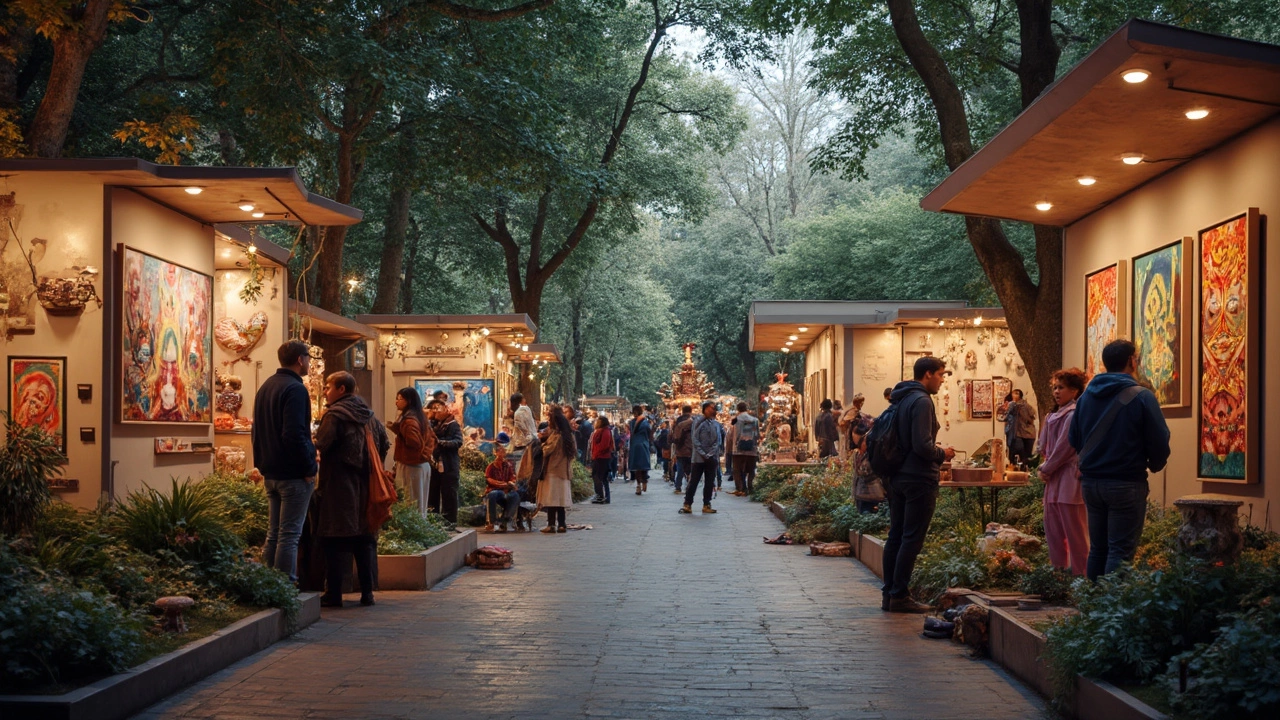
Emphasis on Expression
When it comes to modern art, expression is king. If classical art was about capturing life-like detail, modern art throws that playbook out the window. Instead, it's all about letting artists' emotions and thoughts take the wheel. Have you ever felt a wave of emotion just by looking at a painting? That's not by accident. Artists like Jackson Pollock and Vincent van Gogh led the charge in using expressive brushstrokes and bold colors to convey more than just a picture—they were conveying raw, unfiltered emotion.
Let's talk technique. A modern artist might use thick, visible brushstrokes to show their movement and gestures while creating their work. It's almost like watching a sneak peek behind the scenes. You know Pollock's famous drip paintings? They weren't just random messes but rather a dance of emotions captured on canvas. There's an energy and spontaneity in their work that reflects how the artist was feeling at the time of creation.
Also, emotions aren't limited to just joy or sadness. Some pieces might stir up a mix of feelings, leaving you thoughtful or even slightly confused, and that's totally okay. That's exactly modern art's magical capability—inviting you to explore your own reactions. This personal interaction between art and viewer is what makes it hit home.
By the way, modern works might not always look polished or 'finished' like traditional art, and that's intentional. The unfinished or rough look allows the emotional flow to remain open-ended, encouraging you to feel and interpret freely.
Incorporation of New Technologies
If you think modern art isn't keeping up with the times, think again. Some artists are basically like tech wizards, bringing new technologies into the art scene. Imagine walking into an exhibit and instead of just paintings, you see digital displays, virtual reality setups, or even AI-generated art. It's like art meets sci-fi.
One cool example is how AI is being used. Artists use algorithms to create ever-changing digital artworks, sort of like a playlist that never repeats the same song twice. Mario Klingemann is one such artist, using AI to explore creativity and intelligence through art.
Then there's Olafur Eliasson, who uses light and projection technology to create immersive experiences that go beyond traditional canvases. He’s known for his installations that change depending on your perspective or even the weather—talk about interactive!
The world of virtual reality (VR) has artists stepping into the third dimension. VR allows you to step inside a painting or sculpture and explore it from within. Antoine Viviani's 'Soul City VR' is a perfect example, letting people wander through a futuristic urban landscape.
Let's not forget the internet too. Some artists have harnessed the power of social media to create art that exists solely online, reaching wider audiences without needing a physical gallery space. Platforms like Instagram have even become art galleries where artists share their works directly with the public.
The beauty of integrating new technologies is that it gives artists a broader toolkit to express themselves, pushing modern art into new territories. It's an exciting world where the lines between art, technology, and interaction are blurring, making for some fascinating creations that are both unique and thought-provoking.
The Role of the Viewer
When it comes to modern art, it's not just about what the artist creates. What the viewer brings to the experience is crucial, too. Ever felt like you're part of the art when you're looking at it? That's exactly the vibe modern art aims for. It invites people to engage, think, and sometimes even interact physically.
Take, for instance, installations by artists like Yayoi Kusama, known for her immersive environments. Her works aren't just to be seen; they're to be experienced. Step into one of her polka dot rooms, and suddenly, you're part of the art. This makes the viewer's role incredibly dynamic.
Unlike classical works, where interpretation might be more straightforward, modern pieces can be elusive—almost like puzzles waiting for a unique solution depending on who's looking. This gives lots of freedom to form personal connections. Ever stood in front of a painting and found yourself reminded of an old song or a distant memory? That leap is your mind bridging the gap between the piece and personal experience.
In today's art scene, the viewer's perception often adds layers of meaning, beyond what's captured on canvas or sculpture. Museums and galleries even encourage this, offering guided tours where discussions help visitors decipher and expand ideas.
| Artist | Engagement Type |
|---|---|
| Yayoi Kusama | Immersive installations |
| James Turrell | Light and space experiences |
| Olafur Eliasson | Interactive environment |
This shift is part of what makes modern art so accessible and exciting. Everyone brings something unique to the table, which means exhibitions can be rich, evolving dialogues between art and audience. Whether you're a seasoned museum-goer or just someone checking out a local gallery with friends, your view counts. Next time you're up close with an intriguing piece, remember, you’re an essential part of the conversation.
